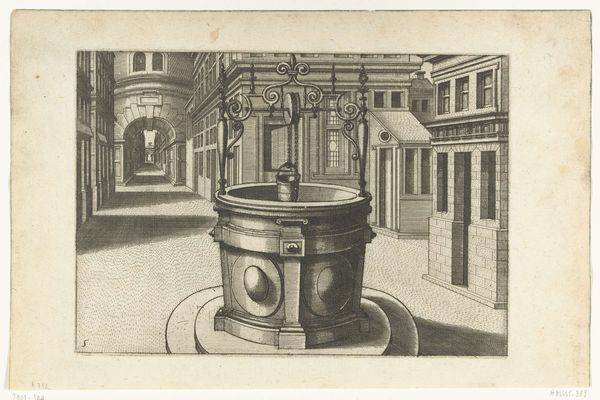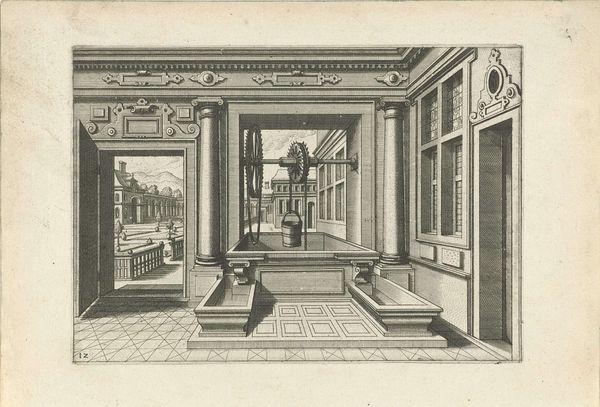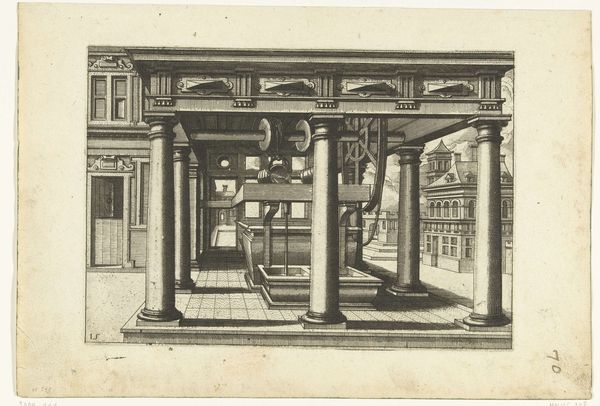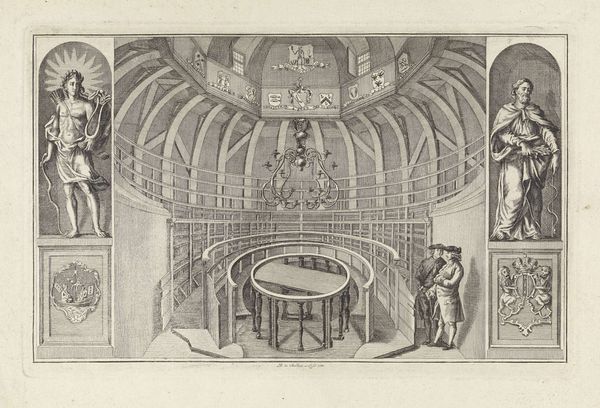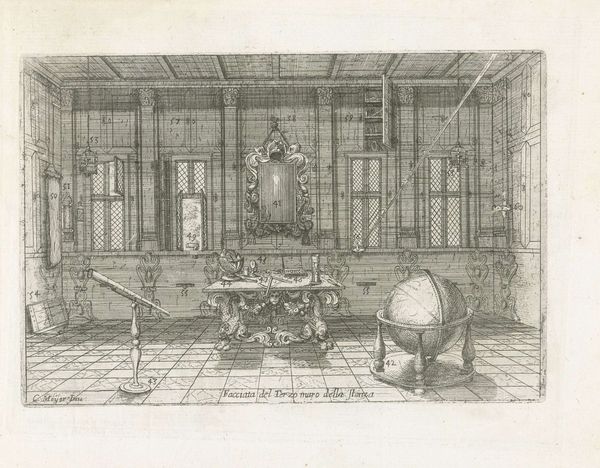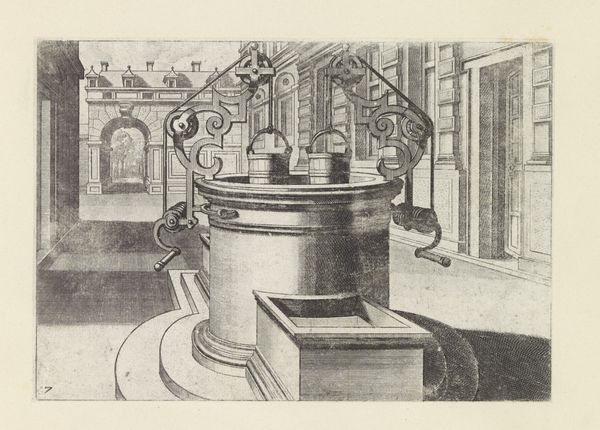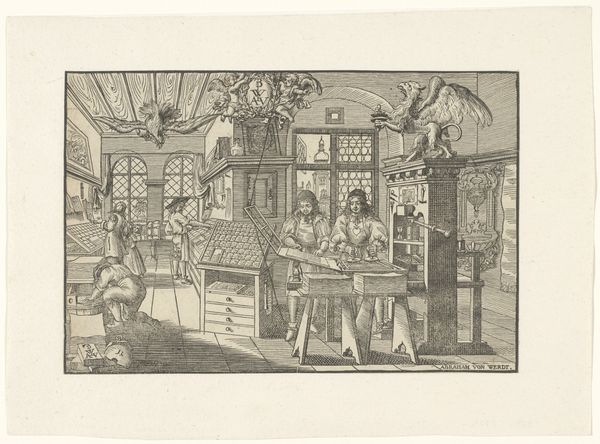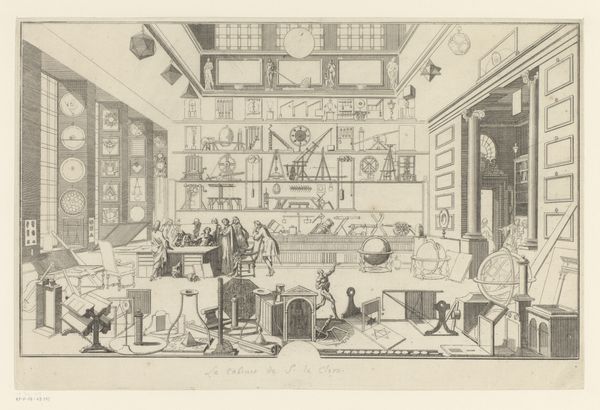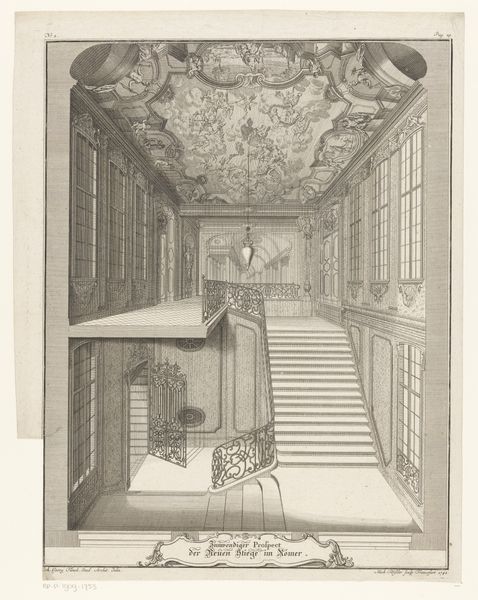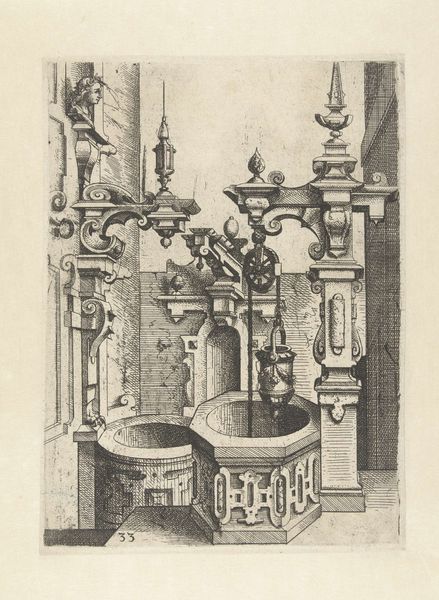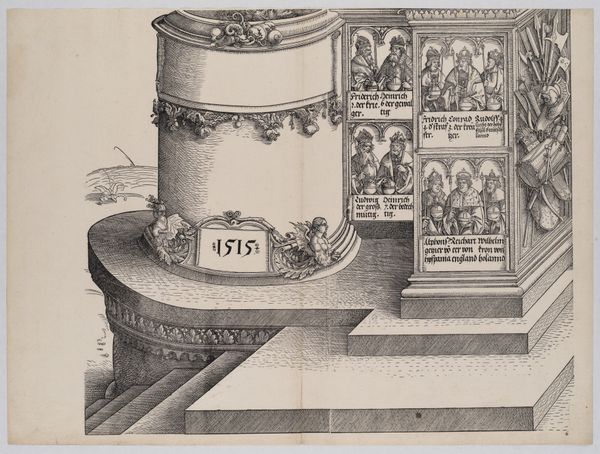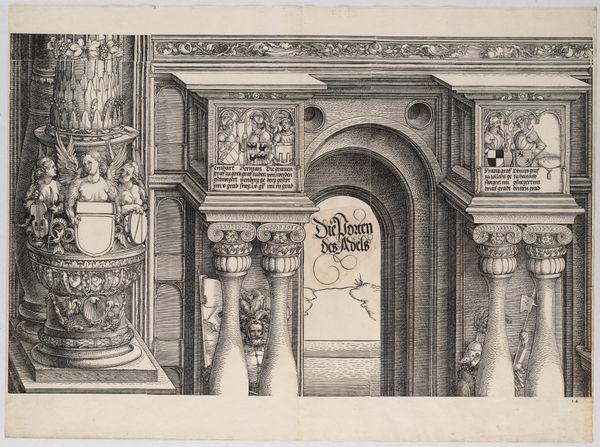
print, engraving, architecture
# print
#
old engraving style
#
landscape
#
11_renaissance
#
genre-painting
#
engraving
#
architecture
Dimensions: height 142 mm, width 202 mm
Copyright: Rijks Museum: Open Domain
Curator: This engraving, titled "Ronde waterput met twee akers aan een katrol," or "Round Well with Two Buckets on a Pulley," was created around 1574 by Johannes or Lucas van Doetechum. Look at how sharply defined the architectural setting is! Editor: Immediately, I notice the rigid precision, that sharp contrast—the cool detachment conveyed by the calculated perspective is almost unnerving. Curator: It's a masterful demonstration of perspective, certainly. It gives depth, creating almost a stage-like setting for the well. But, let’s consider that a well like this would have been a central point of communal life. Think about the women gathering there, the social dynamics, the sharing of news and resources. This wasn't just an architectural detail; it was a socio-political hub. Editor: While I acknowledge the possible implications for the labor of women implied by the water well's context within the space, I think this artwork is mainly concerned with geometrical relationships. Notice how the cylindrical form of the well plays against the rectangular geometry of the surrounding architecture and water trough, each reinforcing the other through counterpoint. The vanishing points accentuate that, creating depth, sure, but also spatial harmony. Curator: Harmony maybe, but for whom? The perfectly rendered architecture likely caters to a wealthy patron, underscoring class divisions and control over resources. Consider also how these spaces often served as backdrops for crucial interactions and even clandestine meetings. These engravings offered viewers access to powerful, noble environments, indirectly influencing fashion and customs through printed form. It serves as an early form of documentation for spaces used for social practice and class distinctions. Editor: Still, look how skillfully the artist uses line weight. The variations capture the light beautifully, defining edges and suggesting depth even within this single-color medium. Note, for instance, the elegant swirling of metal. That intersection of delicate flourish against a grid is, formally speaking, marvelous! Curator: It is quite refined; I agree that it documents spaces, the customs around shared labor and the beginnings of marketing power for aristocratic ways of living. Editor: So, finally, beyond socio-historical concerns, looking carefully here yields a strong case for admiring this artwork's delicate mastery of representing physical space via engraving skills, in its time.
Comments
No comments
Be the first to comment and join the conversation on the ultimate creative platform.
